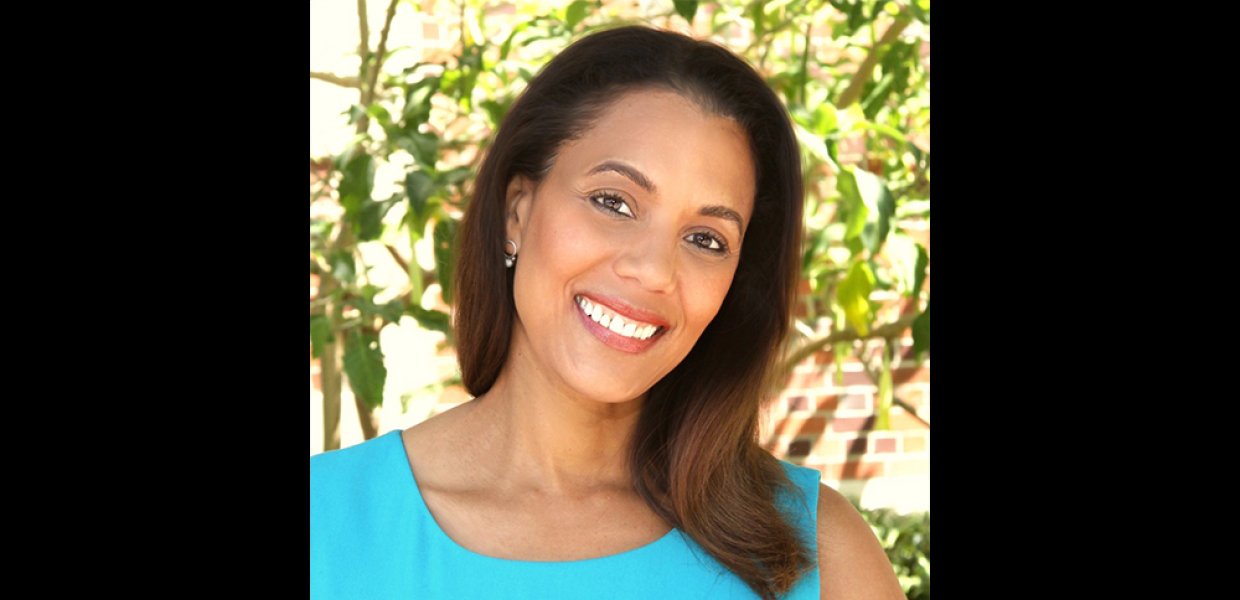Inside the classrooms at USC Annenberg, students are the ones typically tasked with answering the hard hitting questions. "Five Minutes with..." turns the table on faculty and staff to ask them the hard questions.
Lisa Pecot-Hébert, lecturer in broadcast and multimedia journalism, is not only busy as an advisor for the National Association of Black Journalists at USC but also makes time to research and present on a cross section of those living in America by driving across the country.
Pecot-Hébert shared a few thoughts with us about about her career, which has included communication, public relations and higher education, and where race and gender stand in media.
How did you begin your career in journalism, and what led you to your current position at Annenberg?
My journalism career has been one that has been filled with journalism, public relations, higher education and communication positions. My first job out of college was at Orbit Entertainment, which was located on the Paramount Studios lot. That experience proved to be "too Hollywood" and I decided to go back to graduate school in D.C. to get my Master degree in broadcast journalism and public affairs. That changed my trajectory to one that was more journalism and less communication. From there, a variety of reporting, teaching and public relations positions followed. I am an L.A. native and I always told myself that once my son graduated from high school (I was a professor at DePaul University in Chicago at this time) I would move back home. I came back home and have found a home at USC Annenberg.
You're an advisor for National Association of Black Journalists at USC, which recently won the organization's "Student Chapter of the Year" award. Why is this recognition important for Annenberg and for student journalists?
I was particularly proud of this award because the USC NABJ chapter was inactive for a number of years. Kay Angrum and Jordyn Holman worked very hard to breathe new life into the chapter and that energy allowed us to be voted Chapter of the Year. It is important for student journalists, especially student journalists of color, to know that their work matters. We are working hard this year to continue the excellence Kay and Jordyn instilled.
What is the Gender & Sexuality Division, and what is your role in the organization?
The Gender & Sexuality Division is an interest division within the Broadcast Educators Association (BEA). This division stimulates awareness and discussion of existing issues and problems related to gender concerns in the media and media education; encourages dissemination of information about impact of gender issues to professional colleagues in the field; leads discussion on issues of promotion and tenure related to gender; fosters and promotes the teaching of issues focusing on gender-related concerns as a substantive area of study within the disciplines of broadcasting/media. I am the Chair of this division.
Has the representation of race and gender in the media improved over the years?
Hum, this is a question not easily answered in a soundbite, but in a word, yes it has. There are more media blogs, websites and community forums dedicated to the representation of race and gender, thus by default, the topics have found a platform that was previously not available. Women and people of color are gaining ground in positions of power, therefore they possess more control about the way the two groups are represented in the media and the stories that are told.
Your upcoming panel at South by Southwest is called "100 Million People You Don’t Know, But Should." Who are they? What can the media do to help bring light to these people?
Demographics present America as a big, dynamic, multicultural country but when you take off the largest cities and re-run the numbers, America is less diverse and more homogenous than one might think. These two Americas stand in stark contrast: they look different, value different things, and choose what and how they consume in unique ways. My research partner and I decided to go outside of our bubble and drive through middle America interviewing people about values, their views on social media, etc. While the media has done a better job of showing a cross section of America, many programs, commercials, etc. still reflect urban centers, with urban problems. My SXSW presentation will be an hour, so this answer is an oversimplification of the project, but we decided to go interview and meet people in Fargo, ND, Omaha, NE and Sioux Falls, SD to name a few, and really talk to groups of people about their version of America.

